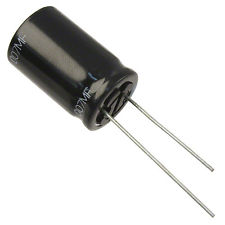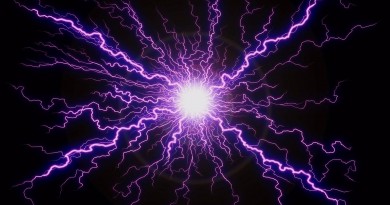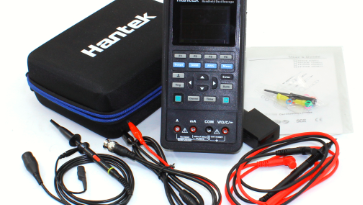How to Discharge Capacitors in a Switched-Mode Power Supply
Here is a short tutorial on how to discharge the capacitors in a power supply so you can safely repair it:
- Do not short the terminals of a filter capacitor with a screwdriver. This can be dangerous.
- Screw a 100-watt lightbulb into a socket with exposed leads.
- Attach one lead to each terminal of the capacitor, the bulb should illuminate.
- When the bulb turns off, the capacitor is empty.
- Alternatively, you can bridge the terminals of the capacitor for a few seconds with a high wattage resistor, something like 2.2k ohms, 10 watts will work.
Switched-mode power supplies have multiple large-filter capacitors that can hold hazardous charges, even if the power supply hasn’t been used in days. These filter capacitors typically have values as high as 220uF/250V and 330uF/400V. You must discharge the capacitors before working on power supply circuits so you won’t get shocked.
There are three different ways to discharge large filter capacitors in a power supply: with a screwdriver, the leads of a socketed 100 watt light bulb, and the leads of a high-wattage resistor.
Using a screwdriver to discharge the capacitor is not recommended because you can generate a spark and damage the printed circuit board or circuitry of the power supply. You can even blow the power section. Keep in mind that if you know a capacitor’s stored voltage is relatively low, you can discharge it with a small screwdriver without undue risk.
If the capacitor is holding a heavier charge, discharging the capacitor can melt the screwdriver’s tip as well as the copper of the printed circuit board. A heavy spark is especially dangerous: it can cause small bits of solder lead or copper to shoot from the circuit board, potentially injuring your eyes.
The second method involves placing the leads of a socketed 100 watt electric light bulb on the capacitor’s lead and is used by technicians around the globe. The light bulb acts as an indicator, showing if the capacitor contains a charge. If there is a charge present the light bulb will illuminate and eventually turn off when the capacitor in the switching power supply is discharged.
The last method consists of placing the leads of a high-wattage resistor on the capacitor’s leads. You can use a 2.2k ohm ten-watt resistor to discharge high voltage capacitors in a switched-mode power supply. It is a very simple and effective process, taking mere seconds to completely discharge the capacitor.
There’s really no reason to discharge a capacitor with a screwdriver when all you need is a light bulb or a resistor, so keep that in mind the next time you need to discharge capacitors in a switched-mode power supply.



Can I use an LED bulb? How do I protect myself? Are latex gloves enough? I’m also wearing slippers with a thick plastic sole.
Hi, George
We need to discharge the CAPACITOR 3600UF 400VDC DCME1335 Manufactured by CORNELL DUBILIER.
What kind of tools we need. same as you suggested? 2.2k ohm ten-watt resistor or a light bulb?
Thanks
Yong
You will always need to use Ohm’s law, and Power dissipation formulas to know for sure what you need to do. If you use a ten watt resistor, at 400 volts, then 10 W = 400 V * I (Power formula). We solve for I, which is .025 Amps. Then we use Ohm’s law, for 400 V = .025 A * R. We solve for R, which is 16k Ohms. Therefore, you’ll need a 16k Ohm Resistor with 10 watt dissipation.
It would not be recommended. You need to use your formulas to know for sure if the bulb can handle it.
Pls how can I connect a stand fan without a speed regulator